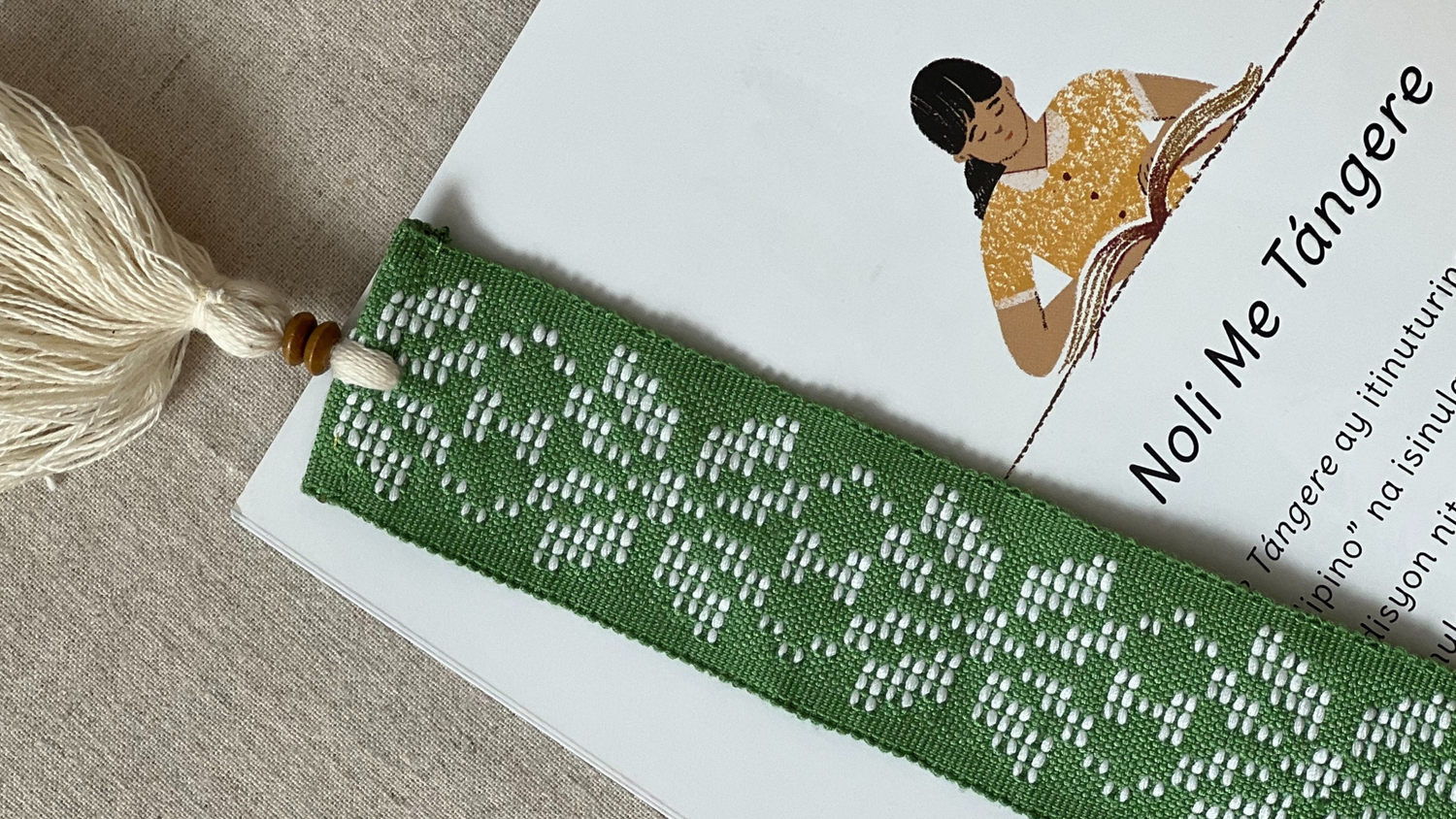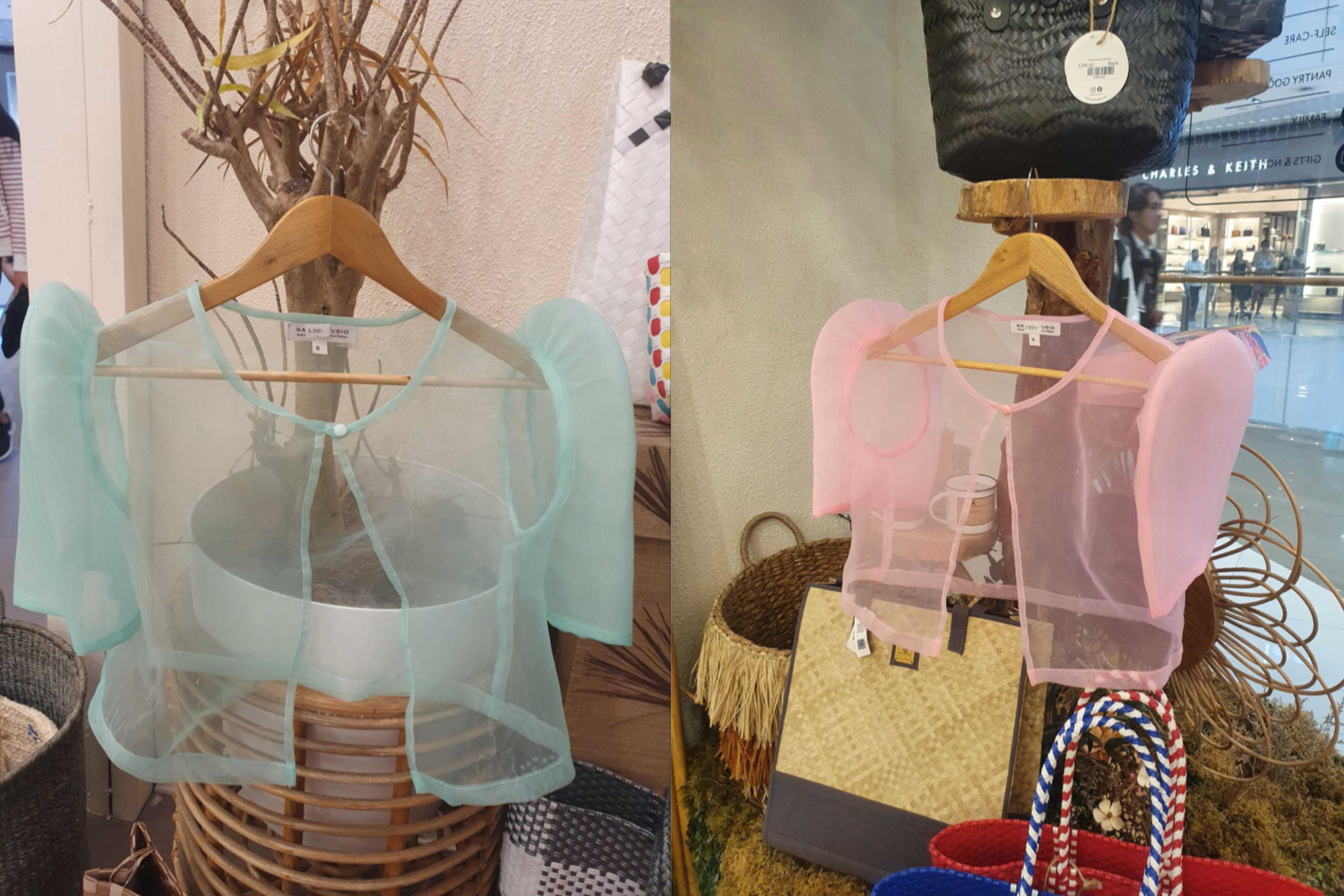by Chesta Santiago
In Pinili, Ilocos Norte, centuries-worth of history and tradition find their finest incarnation in the hands of 96 year old Magdalena Gamayo. Born in 1924, Gawad sa Manlilikha ng Bayan (GAMABA) awardee Magdalena Gamayo is a master weaver of the inabel cloth - the historical cotton fabric bartered for gold in the Galleon Trade and mentioned in the classic Ilocano epic Biag ni Lam-ang. She has been a mag-aabel for over 80 years, learning the craft at age 15 by watching her aunts work at the height of the Second World War.
 National Living Treasure Magdalena Gamayo behind her loom. Photo by Ilocos Norte Government
National Living Treasure Magdalena Gamayo behind her loom. Photo by Ilocos Norte Government
Since then, Magdalena has perfected her skills on her own, teaching herself traditional inabel patterns such as binakol (whirlwinds, her specialty), inuritan (geometric patterns), sinan-sabong (flowers), and kusikos (spiral forms). She has also taught herself to recreate patterns even without a sample from which to refer. In 2012, her unparalleled command of inabel weaving was recognized as she was accorded the GAMABA or National Living Treasures Award. To date, she is one of only 16 awardees.
Magdalena has a deep history with the inabel. Not only does she share the craft with her forebears, it has also helped her get through the war and recover from the death of her only child. And this profound entanglement with the inabel reveals itself in her handiwork of fabrics woven only with sincerest of intent - never with haste, never with unconcern. She has always stressed the need for patience and passion in her craft, evident in the precision of the mathematics of her intricate designs.
The process of abel weaving is complex and demanding as it is. The weaver handpicks and arranges the different-colored threads on the pedalled loom, ensures that the right number of the right colored threads are properly and evenly spaced, and synchronizes the movement of their hands and feet for the wooden loom to work properly. One small mistake - an excess thread or a misplaced color - can ruin the entire design. But Magdalena, with her eyes nearing a hundred years old, continues to command the abel with unrivaled expertise.
For the master weaver, an abel cloth must endure generations of use, hence Magdalena emphasizes the need to look for resilience when choosing threads. Her designs are the most intricate and can even take up to five different colors. With high and accurate thread count, her works have consistently exhibited patterns that are as delicate as they are dynamic. Her history of over 80 years with the abel guarantees a vast and unequaled repertoire of abel weaving techniques and patterns. And whatever technique and pattern she may set her hands on, Magdalena ensures that her works will never lack the precision, sturdiness, and fervor that have elevated her craft into a national living treasure.
But with Magdalena’s age and the conditions her town faces, the persistence of abel weaving is being threatened by the influx of change. The handwoven inabel cloth must now compete with cheap, mass-produced textile. And while the inabel has been exported to Asian and European countries, graced international fashion shows, and consistently made its way to Ilocano households, weavers still fear insufficient market for the inabel, citing lack of funds to purchase supplies as a result. It must also be noted that Magdalena is already of old age, already afflicted with ailments due to her age. Yet despite all of these, the master weaver continues to lead the way in sustaining the craft, training a small group of women composed of her cousin’s daughter-in-law, sister-in-law, and her neighbors to take on the loom.
However, no matter how many weavers she teach and inspire to carry on with pag-aabel, the tradition will remain endangered unless sufficient support is provided for its persistence. Fearing that the tradition of abel-weaving will be lost once she is gone, Magdalena prays for more years to live. But above all, aware of the hardships that entail in being a mag-aabel, Magdalena prays that her apprentices never run out of thread - threads that will provide livelihood for the people in her community and carry the history of her town, country, and beyond.
Further Reading:
https://lorenlegarda.com.ph/magdalena-gamayo-the-grandmother-of-abel-iloko/





